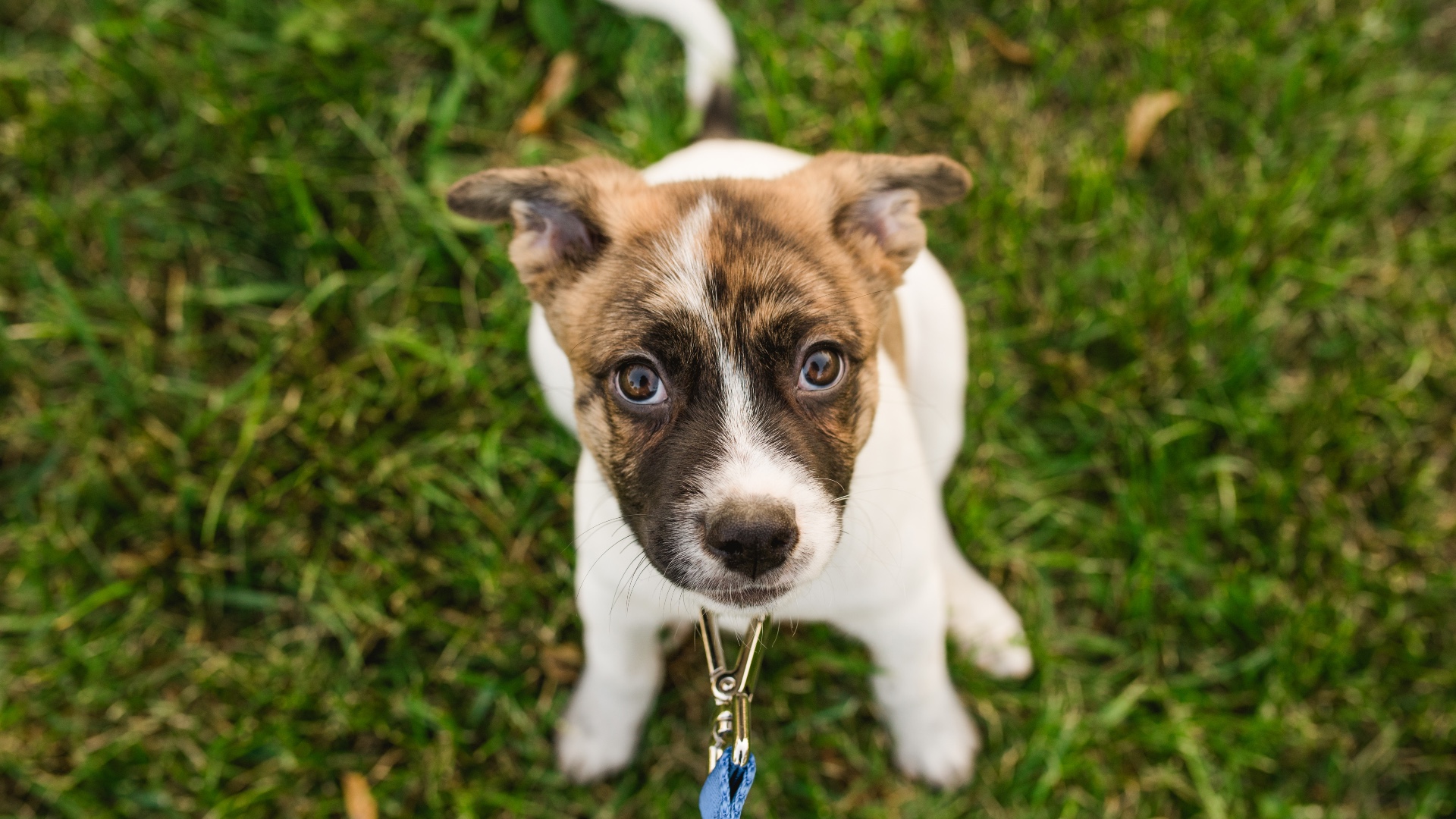Trainer shares four tips to perfect your puppy's loose leash walking skills
Want to enjoy an stress-free stroll with your new fur friend? Expert trainer shares her top tips for helping your pup master the art of loose leash walking

Disclaimer: Unless specifically stated, any expert comments quoted in this news piece have been taken directly from the video cited below.
Getting out and about in the great outdoors can be a wonderful way to bond with your new puppy — but it can soon become an exhausting experience if your puppy is tugging on the leash and pulling you in a million different directions.
While it's important to be aware of how far can a puppy walk to avoid pushing them beyond their capabilities, a gentle, 20-minute stroll for a four-month old pup should be very doable.
So once you know how long you can safely walk your little fur friend for, the next step is to get them walking well — and you have more of a role to play in this than you might think.
Many pet parents unknowingly make a range of common loose leash walking mistakes that can derail their puppy's progress and make walking them a challenge.
To help you avoid these, expert trainer Andrea Isabell has put together a useful Instagram post in which she shares her top tips for an enjoyable loose leash walk with your puppy.
Let's take a look...
PetsRadar Newsletter
Get the best advice, tips and top tech for your beloved Pets
A post shared by Andrea Isabell (@canyonscaninetraining)
A photo posted by on
1. Be consistent: "First of all, your puppy (or dog at any age) is ready to learn how to walk nicely with a loose leash when you are ready to be consistent with them," explains Isabell.
2. Position yourself correctly: "Do not walk along behind them while they pull. When a dog pushes into leash pressure, whether harness, flat collar, or slip lead, and you take one step forward with them, this teaches them to pull."
3. Keep your pup engaged: "Change directions and pace to keep your pup engaged in YOU over the environment," Isabell advises. "Utilize leash patterns like 180° turns and fade aways. When your pup goes toward something ahead, change directions or fade back away from them until they join back up with you."
4. Reward eye contact: "When your pup checks in, use a marker word like “yes” and feed them by your leg where you want them to be."
Isabell says it's important to set your pup up for success by ensuring the environment you start working in isn't overly distracting.
"Try beginning in your driveway or an empty parking lot if needed," she suggests.
And if you feel your puppy would benefit from some extra support in this area, we recommend reaching out to a professional trainer.

Kathryn is a freelance writer who has been a member of the PetsRadar family since it launched in 2020. Highly experienced in her field, she's driven by a desire to provide pet parents with accurate, timely, and informative content that enables them to provide their fur friends with everything they need to thrive. Kathryn works closely with vets and trainers to ensure all articles offer the most up-to-date information across a range of pet-related fields, from insights into health and behavior issues to tips on products and training. When she’s not busy crafting the perfect sentence for her features, buying guides and news pieces, she can be found hanging out with her family (which includes one super sassy cat), drinking copious amounts of Jasmine tea and reading all the books.
